Among the top edible mushroom species is the delicious chanterelle. However, a similar-looking species, known as the false chanterelle, often leads to lots of confusion. Both share a striking resemblance, making chanterelle identification challenging for the amateur forager. Telling them apart, though, is pretty easy once you know the key points to look for.
The importance of correctly identifying edible mushrooms cannot be overstated, especially when it comes to species like the chanterelle and its look-alike, the false chanterelle. By familiarizing yourself with the key differences outlined in this guide, you can safely avoid false chanterelles and become a pro at chanterelle identificition.

Jump to:
Introduction to Chanterelles and False Chanterelles
The chanterelle, belonging to the genus Cantharellus, is a highly prized mushroom known for its unique flavor and aroma. These mushrooms, with their distinguishing golden-yellow hue and funnel-like shape, are a treasure trove for any mushroom forager. They are commonly found in various parts of the world, including Europe, North America, Asia, and Africa.
The false chanterelle, known scientifically as Hygrophoropsis aurantiaca, is a look-alike species of the chanterelle. Its deep-orange cap, orange gills, and dark orange stem often lead to its confusion with the real chanterelle. Although not deadly, consuming this mushroom can cause unpleasant gastrointestinal distress, leading to a very unfavorable foraging experience.
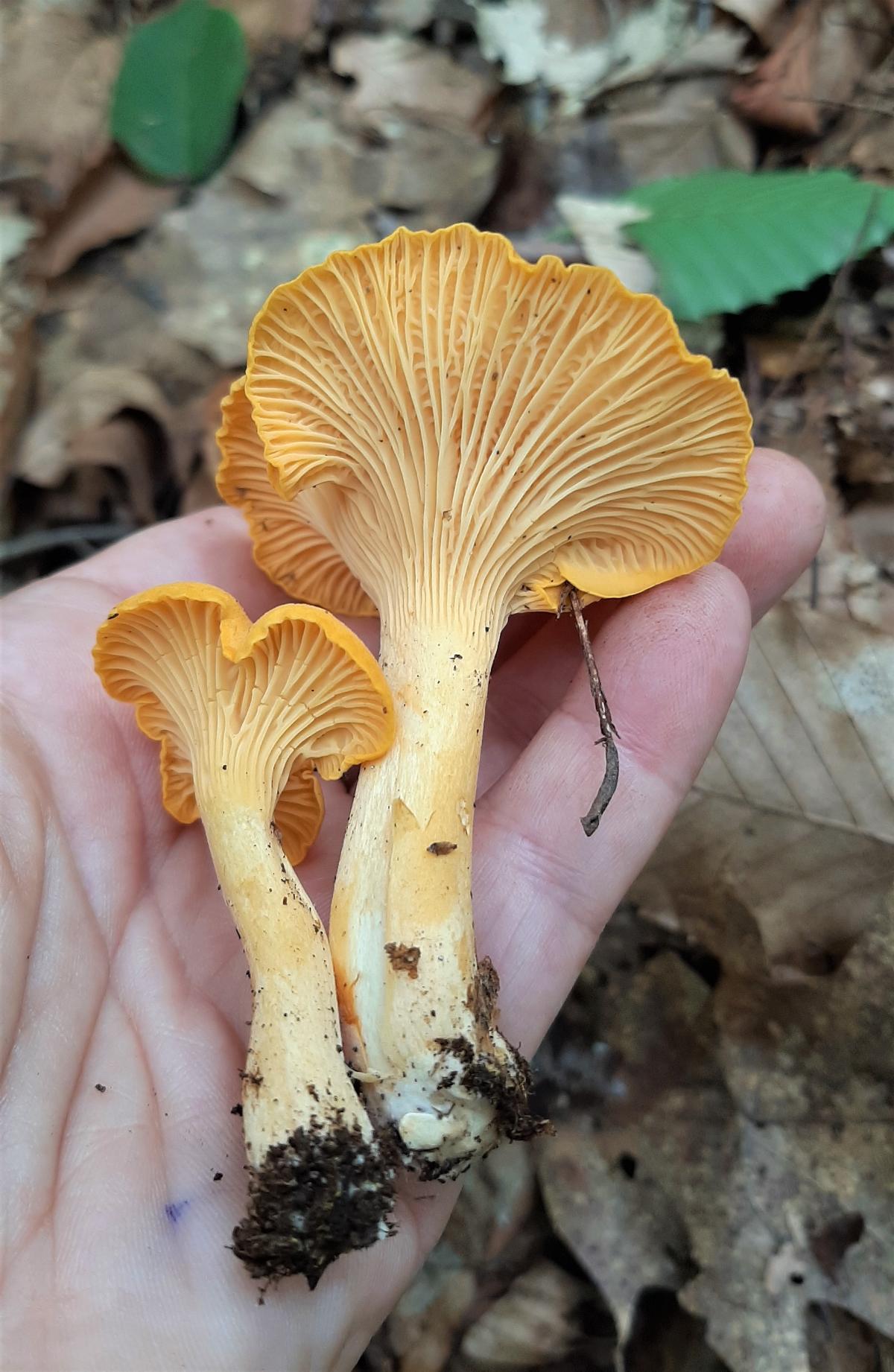
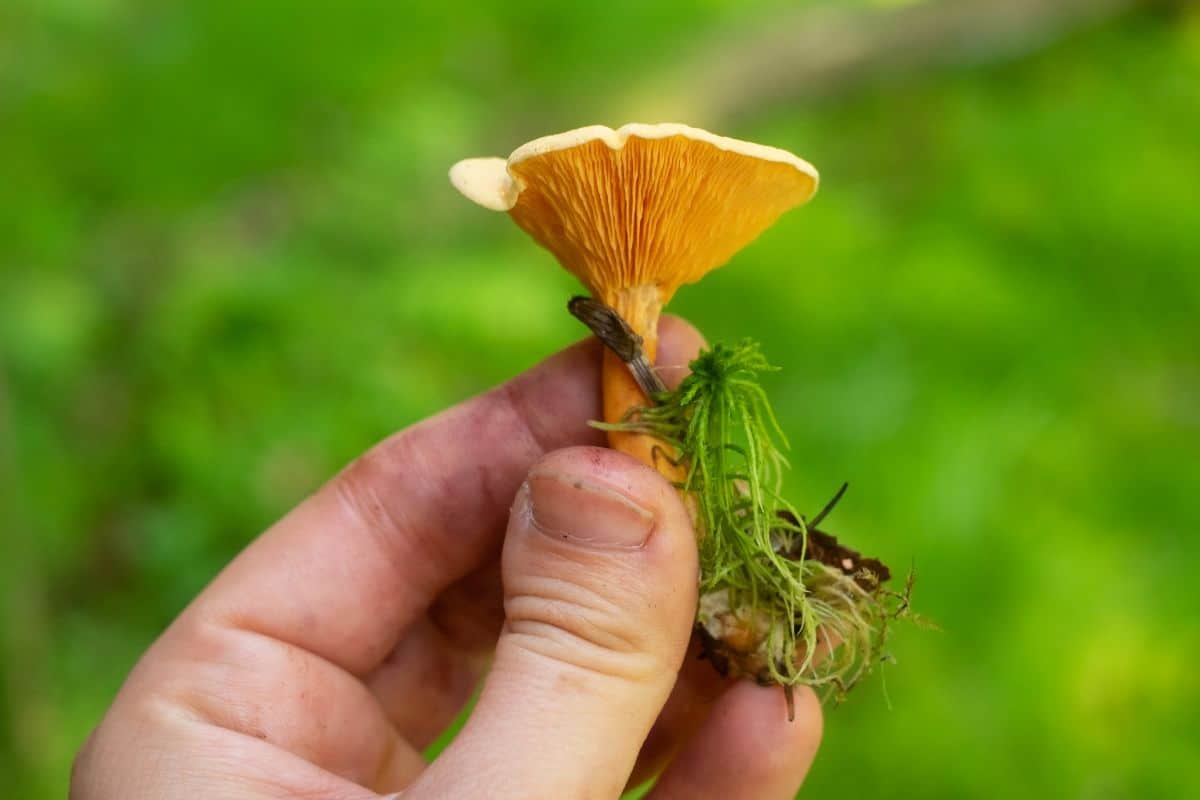
Unraveling the Differences: Chanterelle vs. False Chanterelle Identification
Cap
The cap of a chanterelle typically measures between .75-4 inches in diameter and features a funnel-like or vase-like shape. The color ranges from a vibrant golden-yellow (like an egg yolk) to a pale orange or peach hue.
The false chanterelle’s cap, which ranges from bright orange to orange-yellow, often mimics the golden hue of true chanterelles. However, the cap of the false chanterelle is often significantly brighter orange, especially when young. The cap may also be darker orange at the center and lighter colored around the edges. It also is covered in very fine fibers that make it feel velvety. The true chanterelle’s cap is smooth, never fuzzy.
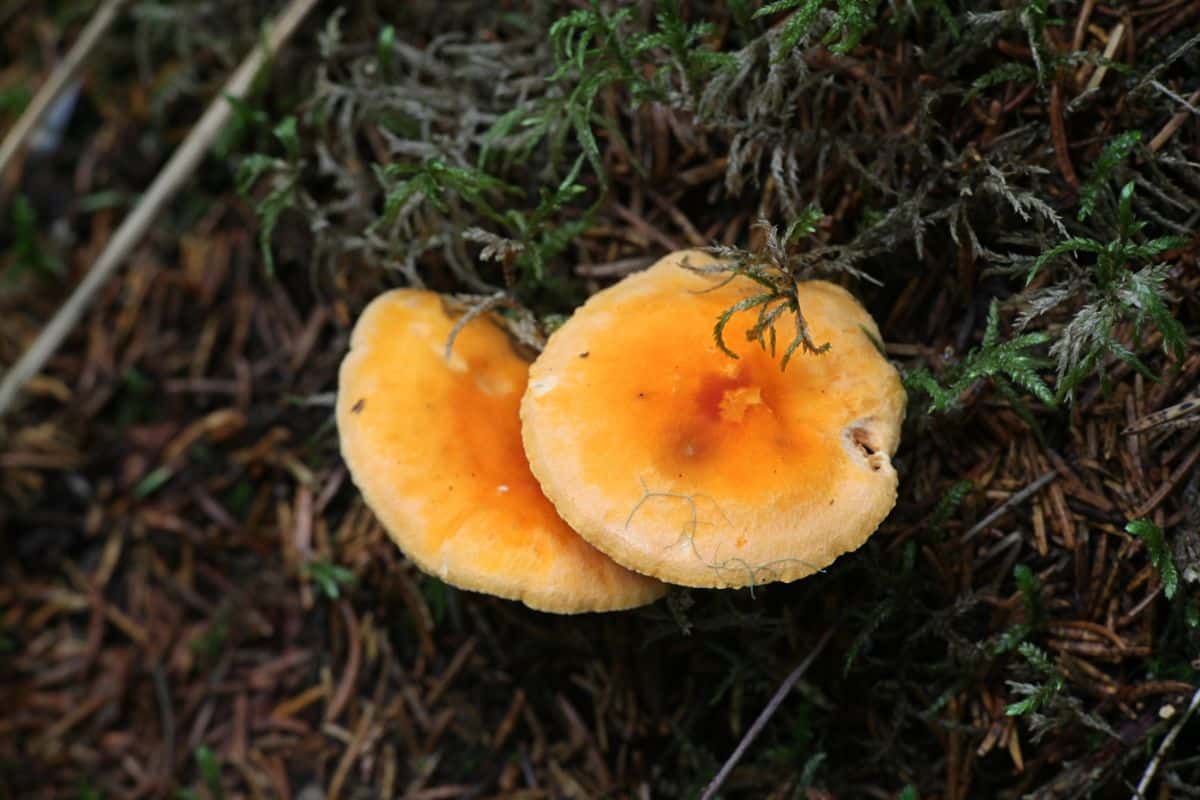
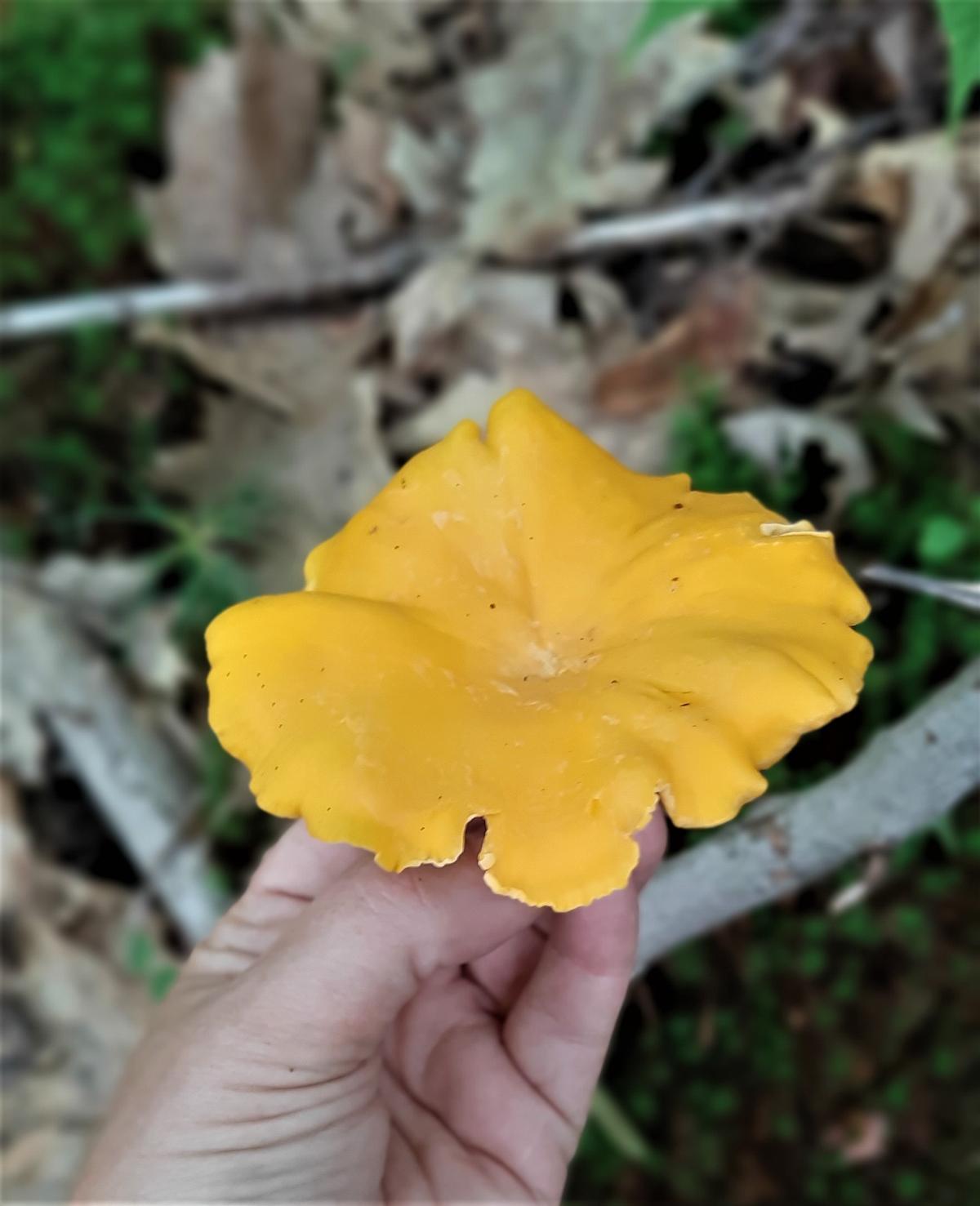
Gills
True Chanterelles have fork-like ridges or folds on the underside of the cap, which are relatively thick, widely spaced, and extend down the stem. These false gills are blunt at the edges and often look like they were melted on. They do not scrape off easily. In addition, the color of the false gills usually matches or is slightly paler than the cap.
Conversely, the false chanterelle possesses true gills that are much more crowded and can be easily separated. These gills are very thin, have many forks in their appearance, and are soft. They are usually brighter in color than the cap, which is another difference from the true chanterelle.
The false chanterelle’s gills also run down the stem a little way, which increases the confusion with the true chanterelle. Often, though, the gills come to an abrupt end along the stem instead of gradually tapering. True chanterelle gills ridges tend to diminish as they go down the stem without a clear “end” point. The false chanterelle’s gills are also sharp at the edges and can be scraped off easily.

Stem
The stem of the true chanterelle is dense, thick, and colored like the cap. It has white flesh (always cut the stem to see the color of the flesh). When you break the stem, it doesn’t snap cleanly. Instead, there are “layers,” like string cheese. In fact, you can peel back pieces of the stem just like you do with string cheese.
False chanterelle stems are also usually the same color as their cap. When you break the stem, though, it snaps cleanly. It also isn’t as robust or dense as the true chanterelle. Often, the stem of the false chanterelle is finely fuzzy, just like the cap.
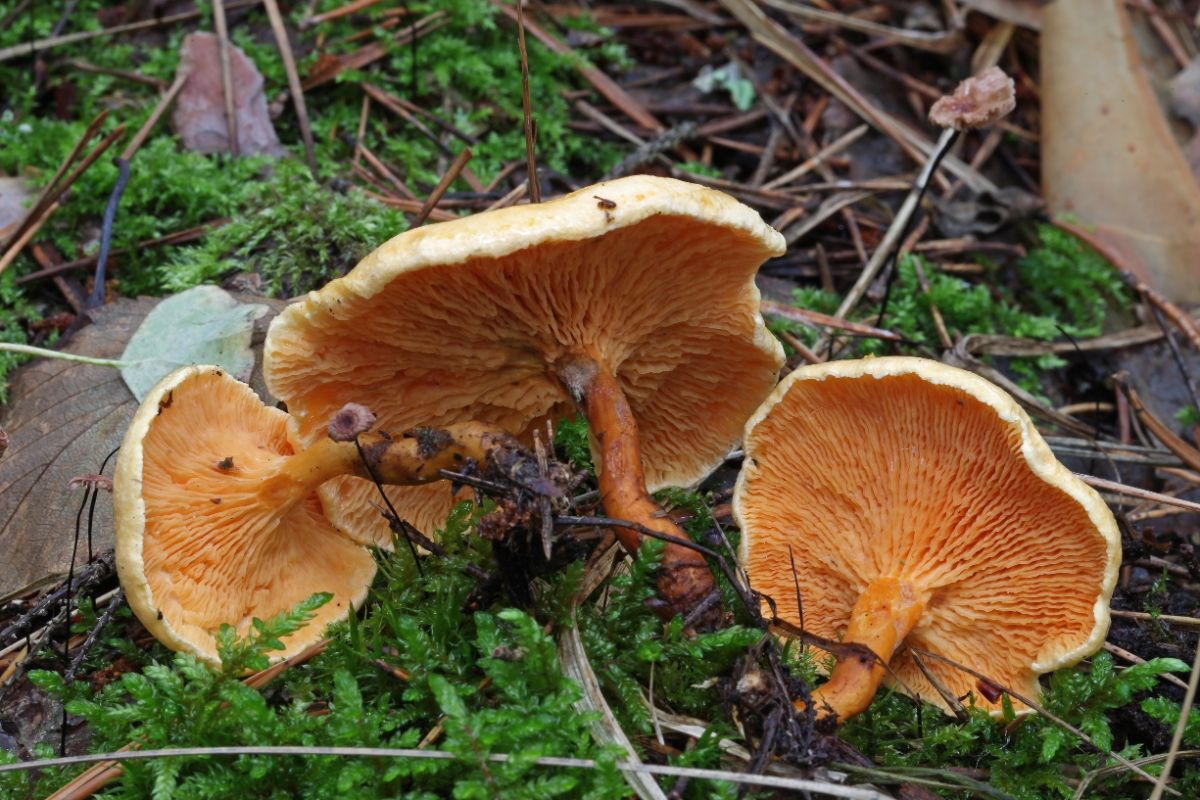
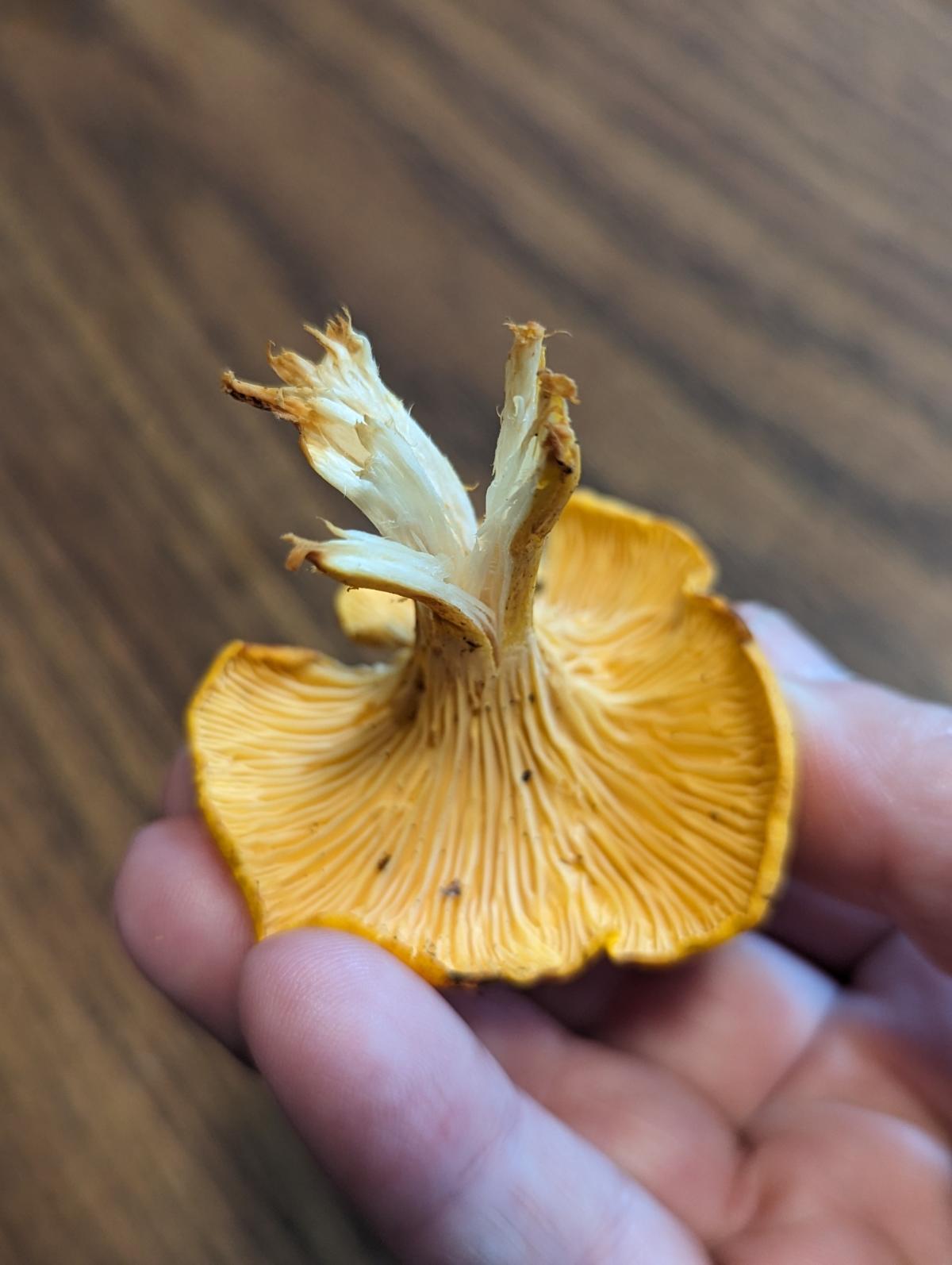
Fragrance
One of the key distinguishing factors between the two species lies in their scent. Chanterelles often have a pleasant fruity or apricot-like aroma. In contrast, false chanterelles lack this distinctive fragrance and usually emit a more generic, earthy, mushroom-like smell. This is key to chanterelle identification — always smell your mushrooms!
Habitat
Chanterelles prefer well-drained soils and are commonly found in coniferous or mixed forests, but the exact habitat varies widely by species. They grow from the ground, never from wood, logs, or mulch.
False chanterelles, on the other hand, are decomposers and can often be found growing among wood chips or on stumps. Sometimes, they source rotting wood or material underground, and it may look like they’re growing from the soil. However, while it may appear they’re growing from the ground, they are not.
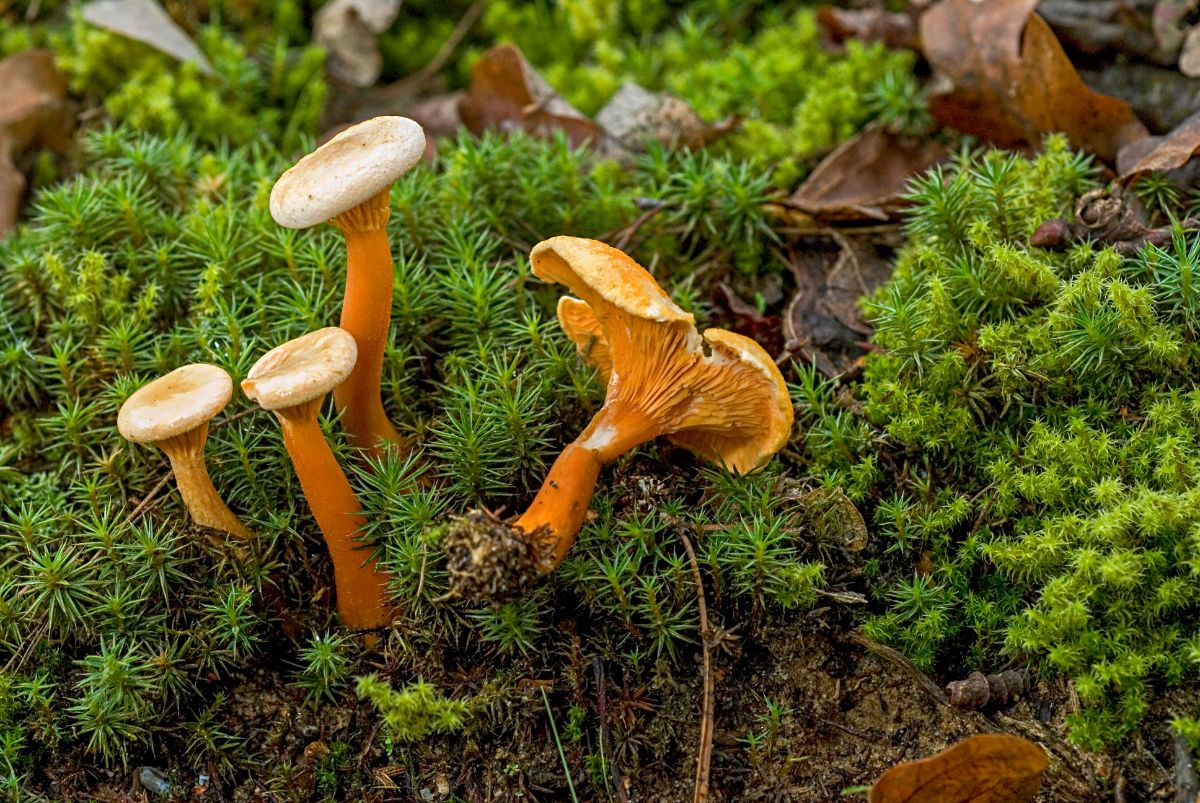
Spore Print
The spore print of both species is whitish, so doing a spore print doesn’t always help with chanterelle identification vs false chanterelles.
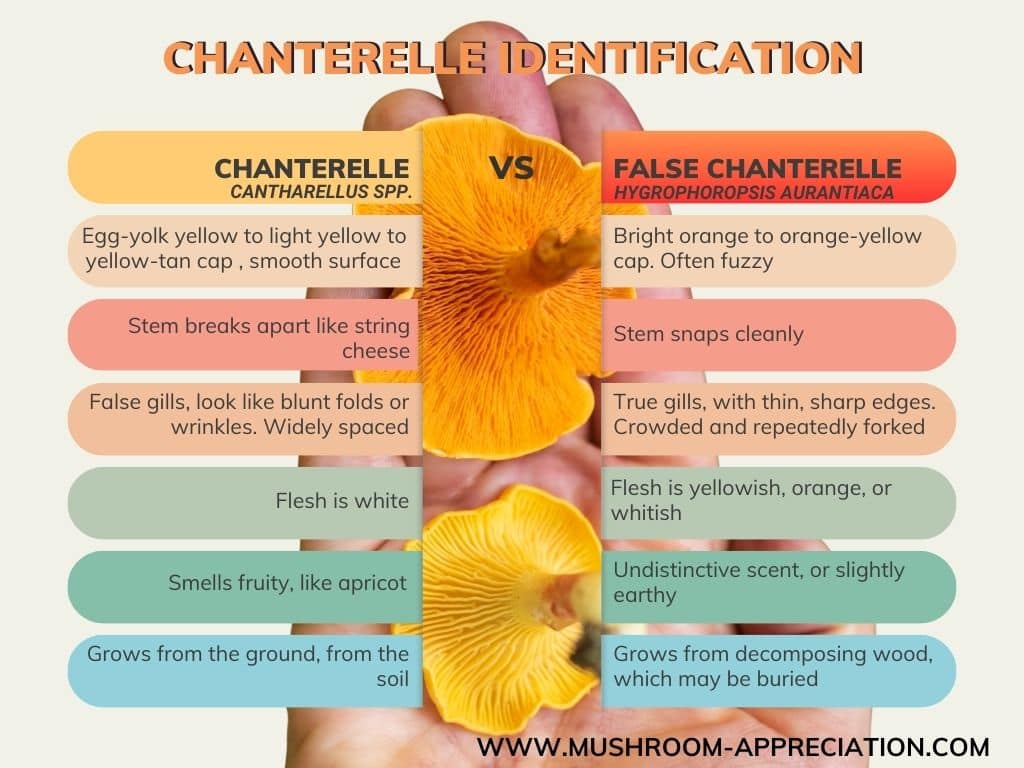
Identifying a True Chanterelle: A Step-by-Step Guide
To ensure a safe and fruitful foraging experience, it’s crucial to be able to approach chanterelle identification with all the necessary knowledge. Here’s a step-by-step guide to help you:
- Examine the cap: Look for a funnel-shaped cap with a vibrant golden-yellow to pale orange color. If it is velvety to touch, it is a false chanterelle.
- Check the underside: On the underside of the cap, you should find thick, fork-like ridges instead of thin, blade-like gills. Scrape the gills. If they aren’t easy to scrape off, that’s true chanterelles. If they come off easily, that’s false chanterelles.
- Inspect the stem: The stem should be sturdy and the same color as the cap, not significantly brighter. Break the stem. Does it break cleanly or come apart in long “peelable” pieces?
- Smell the mushroom: A true chanterelle will emit a pleasant, fruity, or apricot-like aroma.
- Consider the location: Chanterelles grow from the ground, not from rotting wood or decomposing organic matter. They also prefer sunlight rather than dense forests.





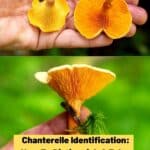
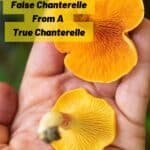
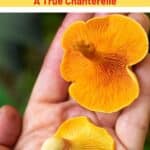
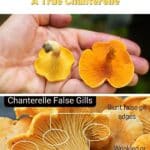
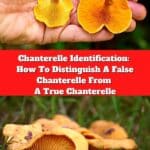

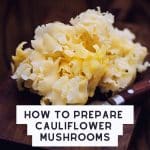
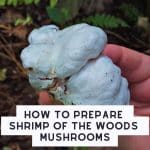
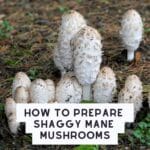
Sylvester salve says
Good tutorial
Jenny says
Thank you!
John Doyle says
Interested in this topic.
Hal says
Hello
I emailed you a couple pictures of what I believe are false chanterelles.
Jenny says
Please submit ID requests to our facebook group. Make sure to read the pinned/featured post to make sure all necessary info is included https://www.facebook.com/groups/340690111324762
Anna says
There is an irritating change of color into blueish while all the other indicators seem to be ok…
(pity I can’t send you a picture). It might either save lives or mushrooms… 😉
Jenny says
You can submit photos to our facebook group for ID. Please be sure to read the pinned/featured post there first